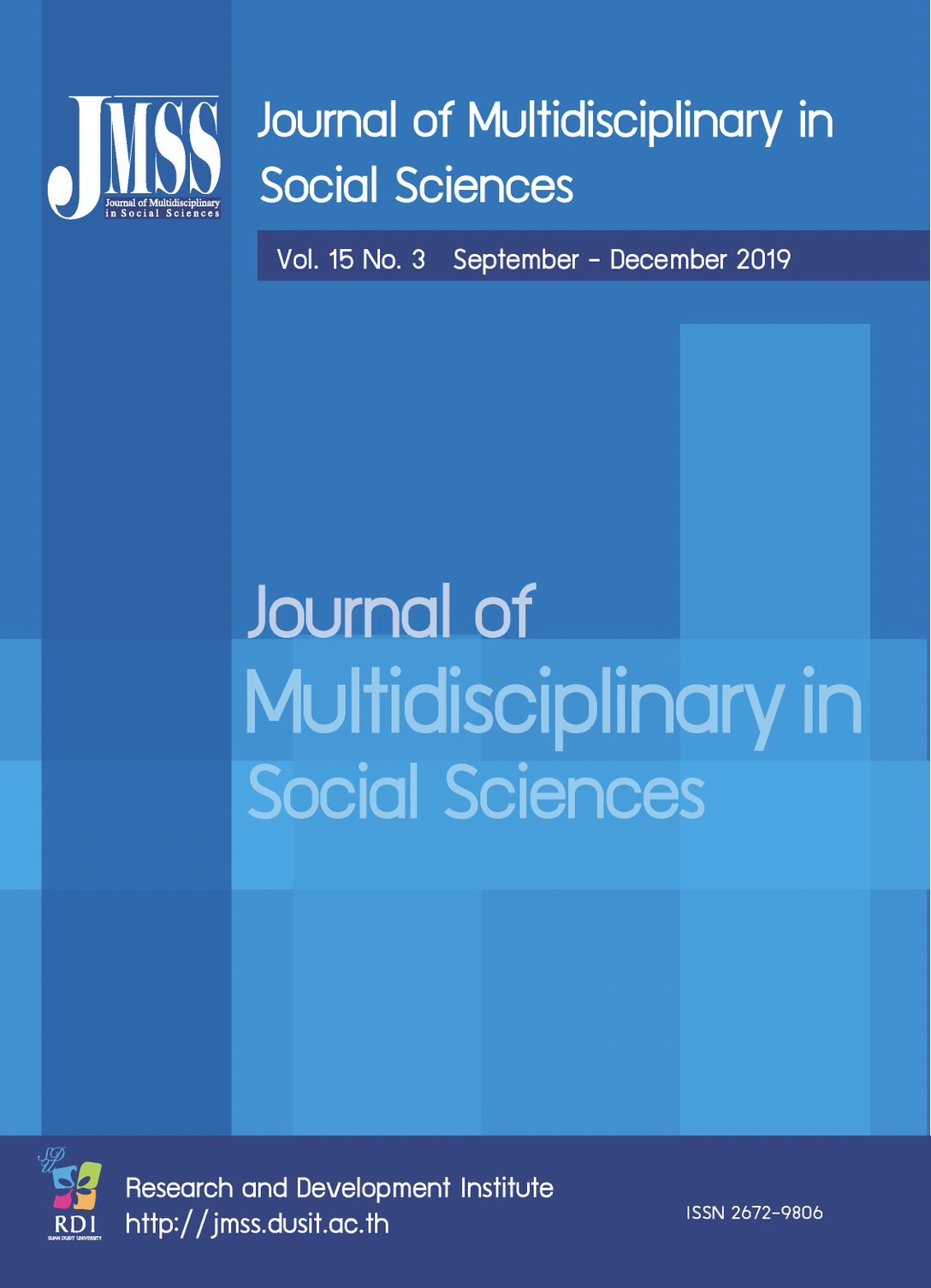Effect of Implementing Instruction Based on Flipped Classroom Approach on Critical Thinking and Attitudes toward Mathematics of Fourth-year Undergraduate Students in Mathematics Teacher Preparation Program, Faculty of Science and Technology, Suan Dusit Un
Keywords:
Instruction Based on Flipped Classroom Approach, Critical Thinking, Attitude Toward MathematicsAbstract
This study aims to: (1) compare critical thinking ability in the course of Trends of Mathematics Teaching of fourth-year undergraduate students who attended the instruction based on flipped classroom approach with criteria of the course at 70 percent and (2) compare attitudes toward mathematics of fourth-year undergraduate students before and after attending the instruction based on flipped classroom approach. Sample of the study was 115 fourth-year undergraduate students who were studying in mathematics teacher preparation program at the Faculty of Science and Technology, Suan Dusit University and selected by purposive sampling. These undergraduate students were studying in “Trends of Mathematics Teaching” course in the first semester of 2017 academic year. Instructional activities in the course were based on lesson plans which were designed focusing on flipped classroom approach. At the end of the course, the undergraduate students had to complete a test focusing on critical thinking in trends of mathematics teaching by results of the IOC analysis that revealed every test item had IOC scores at 1.0 which were greater than the criteria at 0.5 and a questionnaire on attitudes towards mathematics by results of the IOC analysis that revealed every test items had IOC scores ranging from 0.67-1.00 which were greater than the criteria at 0.5. The collected data were analyzed for mean, standard deviation, one-sample t-test and pair-sample t-test.
The study revealed that: (1) the critical thinking ability of the undergraduate students who were in the instruction based on flipped classroom approach is statistically higher than 70% at the alpha level of 0.01 and (2) the attitudes toward mathematics of the undergraduate students after attending the instruction based on flipped classroom approach is statistically higher than those prior to attending the instruction based on flipped classroom approach at the alpha level of .01.
References
Bergman, J., & Sams, A. (2007). Flip Your Classroom: Reach Every Student in Every Class Every Day. Alexandria, VA: International Society for Technology in Education.
Jaikwang, W. (2011). A Study of Mathematics Learning Achievement in Counting Number Properties by Using Multimedia of Grade 7 Students in Kasetsart University Laboratory School Multilingual Program Center for Educational Research and Development, Chonburi Province. Bangkok: Kasetsart University.
Kanjanarakpong, S. (2002). Teaching Technique for students’ thinking skills. Bangkok: Tarn-aksorn.
Khammanee, T. (2014). Science of Teaching: Elements for Effective Instruction. Bangkok: Chulalongkorn University.
Loomroy, R. (2003). Multimedia for Developing Mathematical Problem Solving in Equation of Grade 8 Students with Low Achievement. Bangkok: Srinakharinwirot University.
Makanong, A. (2011). Mathematical Skills and Processes: Developing for Development. Bangkok: Printing of Chulalongkorn University.
Mazur, E. (2013). The Flipped Classroom Will Redefine the Role of Educators. Retrieved January 29, 2019, from http://seas.harvard.edu/news/2013/03/flipped-classroomwill-redefine-role-educators
Ministry of Education. (2008). Basic Core Curriculum B.E. 2551. Bangkok: Kurusapa Ladpral Publishing
Na Mahachai, S. (2013). Flipped Classroom, Study at home, do homework at school. Retrieved June 14, 2017, from http://www.moe.go.th/moe/th/news/detail.php?NewsID=32600&Key=hotnews
Panich, W. (2013). Teacher for Students: Construction of Flipped Classroom. Bangkok: S. R. Printing Mass Products.
Panich, W. (2013). Ways to Build Learning for Students in the 21st Century. Bangkok: Sodsri Saritwong Foundation.
Panyajirawut, K. (2013). Flipped Classroom Instructional Approach. Retrieved June 12, 2017, from http://school.esanpt1.go.th/nites/km/56km/Flipped%20Classroom.pdf
Papol, W. (2008). Structural Analysis of Elements Affecting to Attitude toward Learning of Grade 9 Students. Bangkok: Graduate School, Srinakharinwirot University.
Plangprasobchoke, S. (2006). Mathematics Teaching in School. Bangkok: Phranakhon Rajabhat University.
Ritkaew, S. (2013). Teacher for Students: Building Flipped Classroom. Bangkok: S. R. Printing Mass Products.
Ruangnun, C. (2017a). Using the VPN at Suan Dusit University by Chanisara Metpattarahiran. Retrieved June 10, 2017, from https://www.youtube.com/watch?v=wMJ29189c70
Ruangnun, C. (2017b). The Evaluation form for Attitude Towards Mathematics. Retrieved June 10, 2017, from https://docs.goolgle.com
Schoolwires. (2013). The Flipped Classroom: A New Way to Look at School. Retrieved June 9, 2016, from http://offers.schoolwires.com/flippedclassroomanewway
Uttamang, S. (2015). Flipped classroom approach: Ideal to realistic in Thai language course. SWU EJournal, 16(1), 51-58.
Wonganuttararoj, P. (2003). Psychology of Human Management. Bangkok: Pimdee.
Downloads
Published
How to Cite
Issue
Section
License

This work is licensed under a Creative Commons Attribution-NonCommercial-NoDerivatives 4.0 International License.








